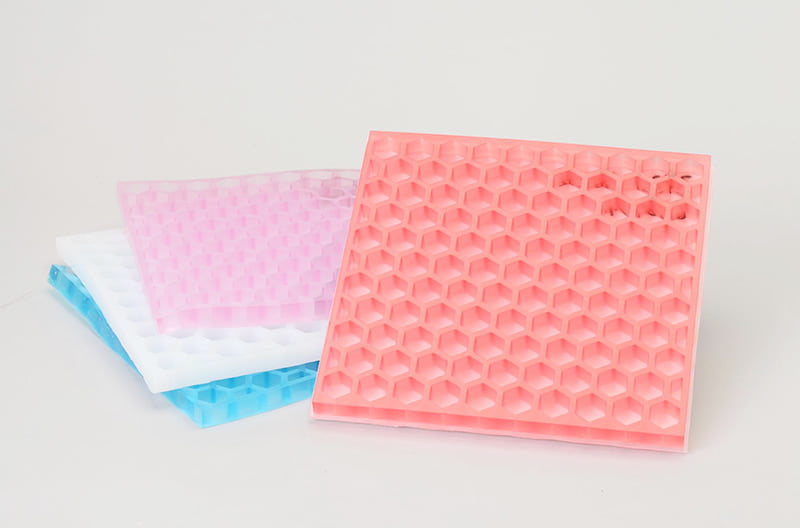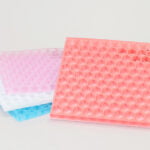Vacuum Casting Materials: A Comprehensive Guide
Vacuum casting is a widely used manufacturing process in various industries. It is a cost-effective method of producing parts in small quantities with high accuracy and consistency. One of the crucial aspects of vacuum casting is selecting the right materials for the process. In this article, we will explore the most common vacuum casting materials, their properties, and their applications.
Table of Contents
- We are a renowned vacuum casting factory in China
- Importance of Material Selection in Vacuum Casting
- Common Vacuum Casting Materials
- Polyurethane (PU)
- Silicone Rubber (SR)
- Epoxy Resin (ER)
- Acrylic (PMMA)
- Nylon (PA)
- Polycarbonate (PC)
- Polypropylene (PP)
- ABS (Acrylonitrile Butadiene Styrene)
- POM (Polyoxymethylene)
- PET (Polyethylene Terephthalate)
- Factors to Consider When Selecting Vacuum Casting Materials
- Mechanical Properties
- Chemical Resistance
- Temperature Resistance
- Cost
- Applications of Vacuum Casting Materials
- Automotive Industry
- Medical Industry
- Consumer Products
- Aerospace Industry
- Best Practices for Vacuum Casting Material Selection
Introduction to Vacuum Casting Services from China Renowned Manufacturer
Tengrui is a renowned vacuum casting manufacturer in China, offering a completed solution to small series low volume manufacturing productions. Staring from the scratch of 3D model optimization, through 1st prototyping making, improve and finalize the 3D model drawing, low volume production and color customization, to the packaging & delivery. We have vacuum casted thousands of products across a wide range of products categories: medical devices, car parts, household appliances, cradles…etc., various of materials were adopted, hereby, we’d like to talk about something on the vacuum casting materials.
Importance of Material Selection in Vacuum Casting

Material selection is a crucial aspect of the vacuum casting process. The material used must have the appropriate mechanical and chemical properties for the intended application. The material must also be compatible with the silicone mold and the vacuum casting process.
Selecting the right material for vacuum casting can significantly affect the quality, durability, and performance of the final product. The material must also be cost-effective, as the production cost can increase significantly if expensive materials are used.
Common Vacuum Casting Materials
Several materials can be used for vacuum casting, depending on the specific application. The most common vacuum casting materials include:
Polyurethane (PU)
Polyurethane is a versatile material commonly used in vacuum casting. It is a synthetic polymer that can be tailored to have specific properties, including flexibility, rigidity, and hardness. Polyurethane can be pigmented to produce parts in various colors, making it suitable for a wide range of applications.
Silicone Rubber (SR)
Silicone rubber is a popular material for vacuum casting due to its excellent flexibility, durability, and chemical resistance. It is ideal for producing parts with intricate shapes and fine details.
Epoxy Resin (ER)
Epoxy resin is a high-strength material used in vacuum casting for producing parts that require high strength and durability. It can also be pigmented to produce parts in various colors.
Acrylic (PMMA)
Acrylic, also known as polymethyl methacrylate (PMMA), is a transparent material widely used in vacuum casting for producing parts with optical clarity. It is also lightweight, making it ideal for producing parts with low weight requirements.
Nylon (PA)
Nylon is a thermoplastic material commonly used in vacuum casting for producing parts that require high strength, toughness, and wear resistance. It can also withstand high temperatures and harsh chemicals.
Polycarbonate (PC)
Polycarbonate is a transparent thermoplastic material used in vacuum casting for producing parts with high impact resistance and optical clarity. It is also lightweight and has excellent heat resistance.
Polypropylene (PP)
Polypropylene is a thermoplastic material commonly used in vacuum casting for producing parts that require flexibility, chemical resistance, and low moisture absorption. It is also lightweight and has good fatigue resistance.
ABS (Acrylonitrile Butadiene Styrene)
ABS is a thermoplastic material commonly used in vacuum casting for producing parts that require high impact resistance, toughness, and dimensional stability. It is also resistant to chemicals and heat.
POM (Polyoxymethylene)
POM is a thermoplastic material commonly used in vacuum casting for producing parts that require high strength, stiffness, and low friction. It is also resistant to chemicals and has good dimensional stability.
PET (Polyethylene Terephthalate)
PET is a thermoplastic material commonly used in vacuum casting for producing parts that require high strength, stiffness, and low moisture absorption. It is also lightweight and has good chemical resistance.
Factors to Consider When Selecting Vacuum Casting Materials
When selecting vacuum casting materials, several factors should be considered, including:
Mechanical Properties
The mechanical properties of the material, including tensile strength, compression strength, and impact resistance, should be considered based on the intended application.
Chemical Resistance
The material’s chemical resistance should be considered, as some materials may degrade or react with certain chemicals or environmental conditions.
Temperature Resistance
The material’s temperature resistance should be considered, as some materials may deform or lose their properties when exposed to high temperatures.
Cost
The cost of the material should be considered, as some materials may be more expensive than others, which can significantly affect the production cost.
Applications of Vacuum Casting Materials
Vacuum casting materials are widely used in various industries, including:
Automotive Industry
Vacuum casting is used in the automotive industry for producing small quantities of parts for prototypes, testing, and low-volume production.
Medical Industry
Vacuum casting is used in the medical industry for producing customized prosthetics, orthotics, and other medical devices.
Consumer Products
Vacuum casting is used in the consumer products industry for producing small quantities of parts for product design, testing, and low-volume production.
Aerospace Industry
Vacuum casting is used in the aerospace industry for producing parts for prototypes, testing, and low-volume production.
Best Practices for Vacuum Casting Material Selection
To ensure the best results when selecting vacuum casting materials, the following best practices should be followed:
- Consider the specific requirements of the application when selecting materials.
- Perform material testing to determine the suitability of the material for the intended application.
- Ensure that the material is compatible with the silicone mold and the vacuum casting process.
- Consider the production cost when selecting materials.
Looking for vacuum casting services from China? Either for low volume manufacturing of small quantity demanded products or pilot run prior to investing huge amount of cost in steel injection mold, we are offering a completed solution, visit us China Rapid Prototyping & Low Volume Manufacturing Factory! (vacuumcastingsz.com), as well as the specific vacuum casting page: Vacuum Casting Factory from China | Polyurethane Casting | Silicone Molding (vacuumcastingsz.com)


